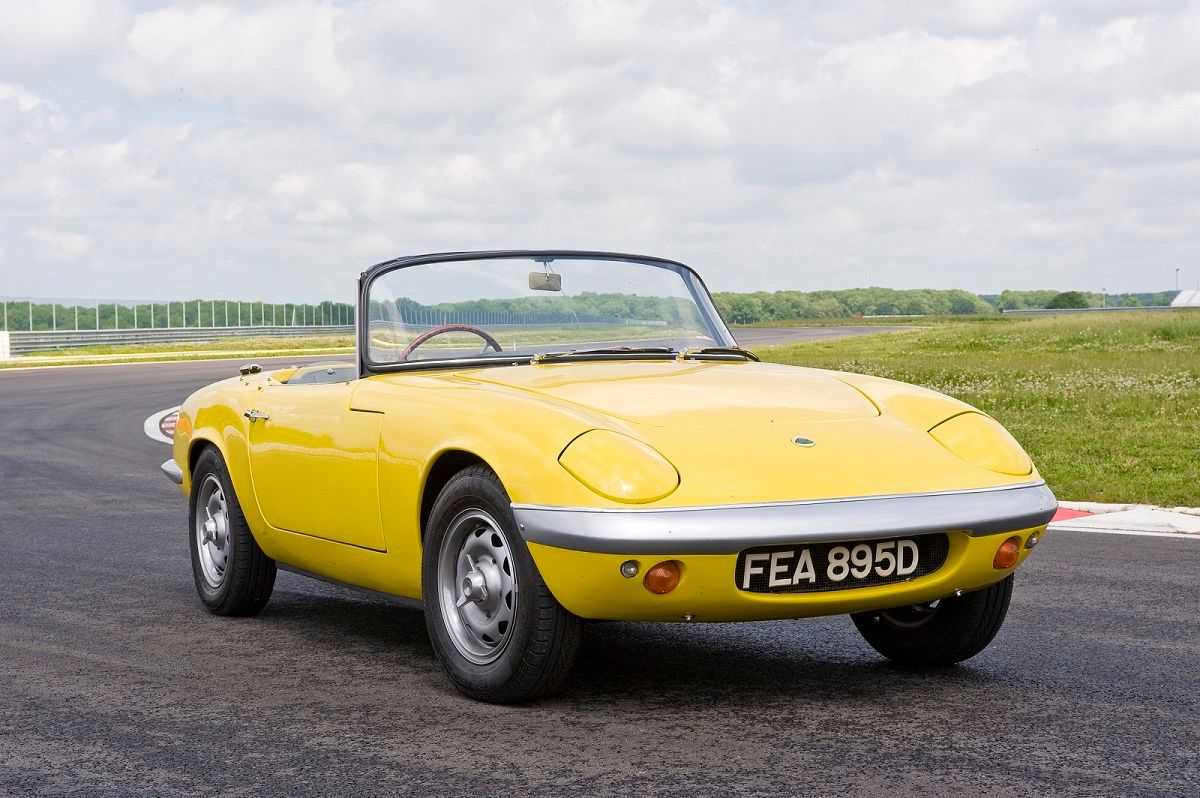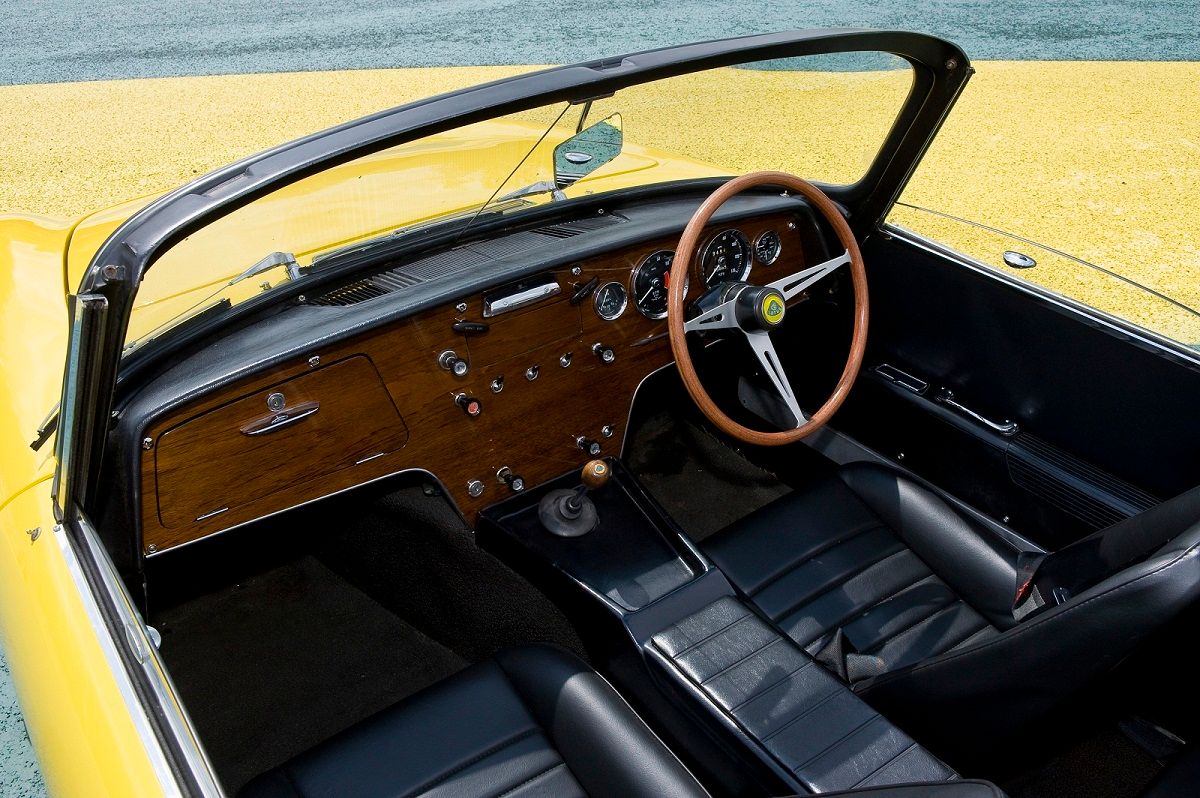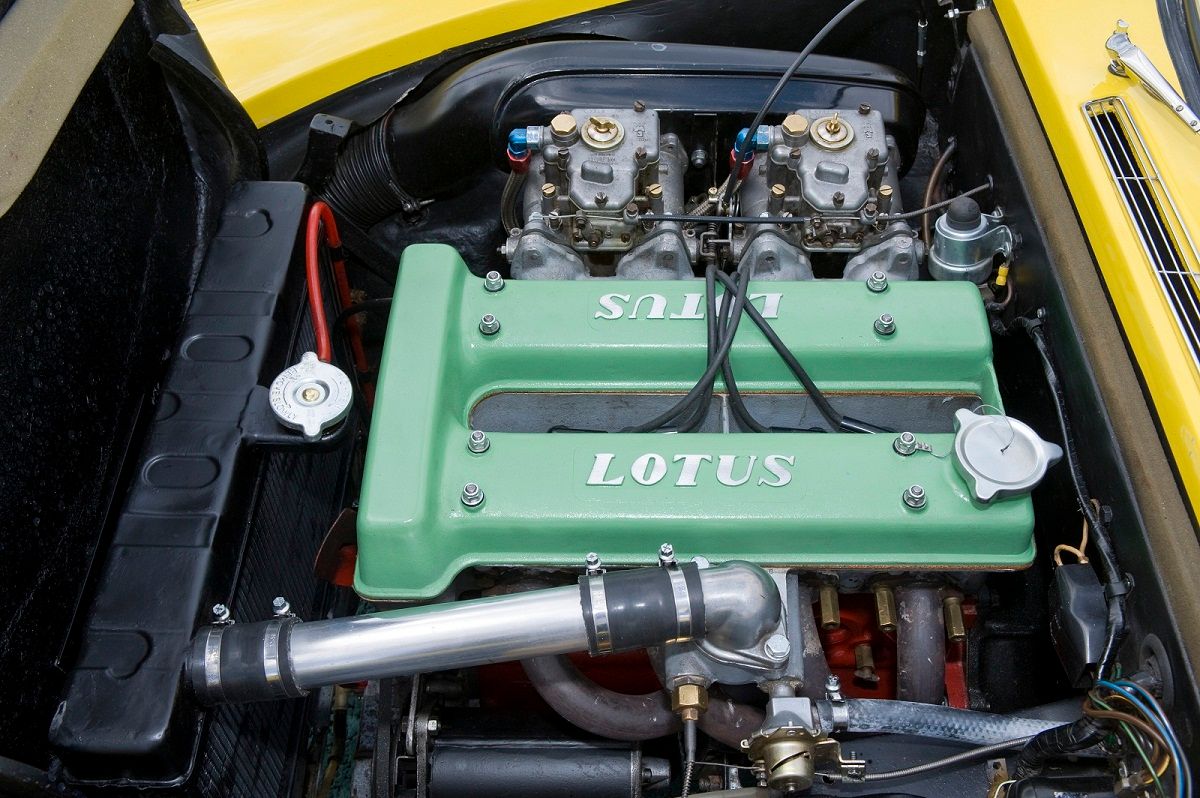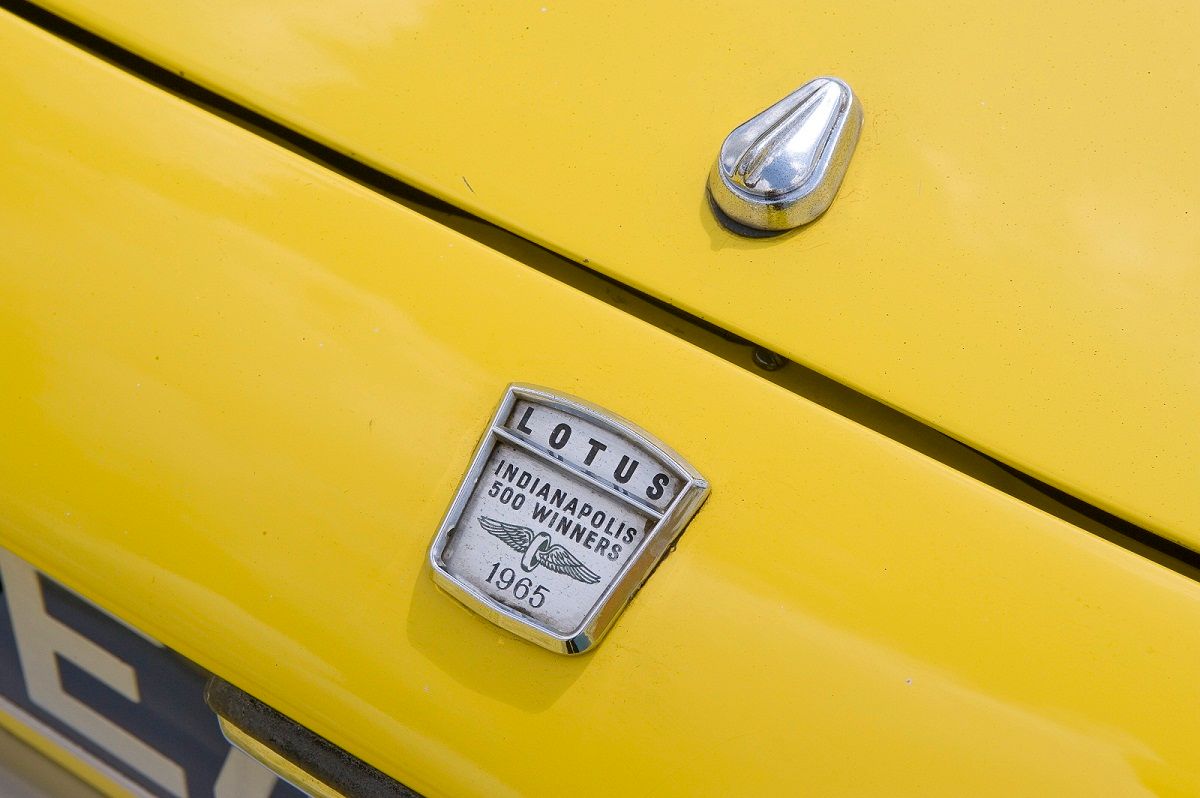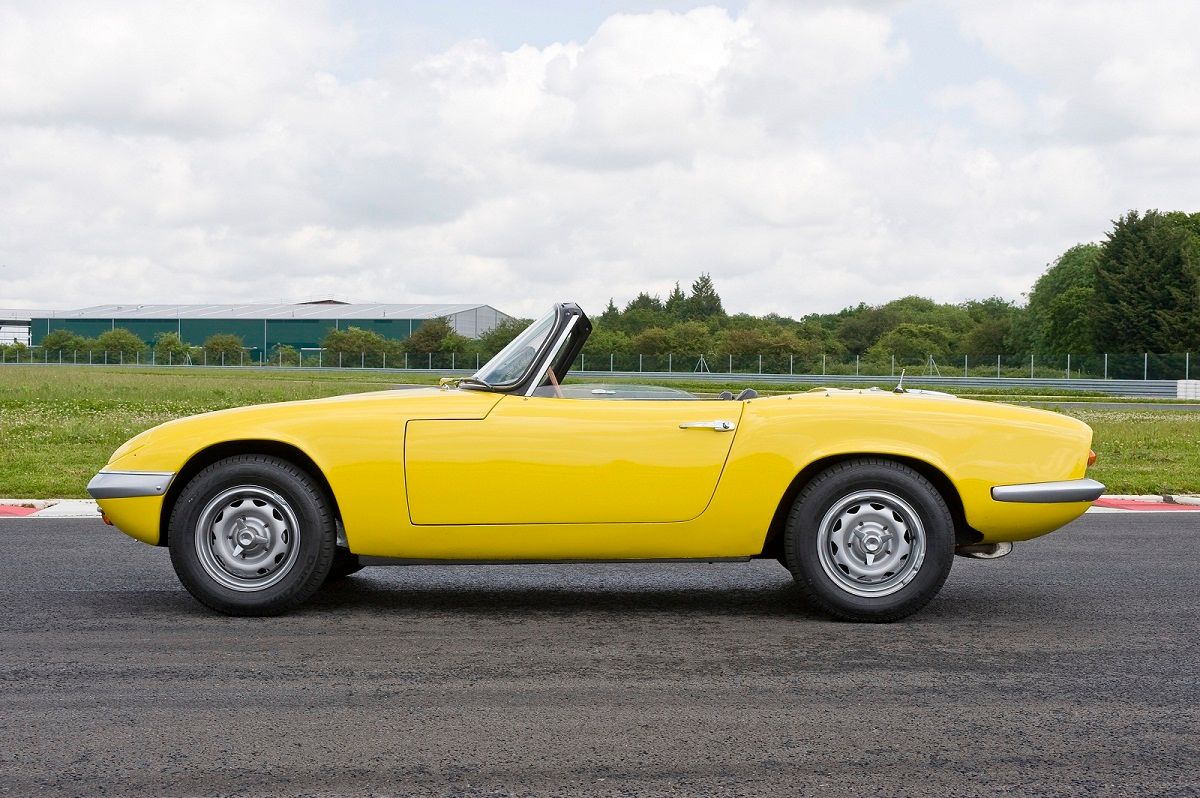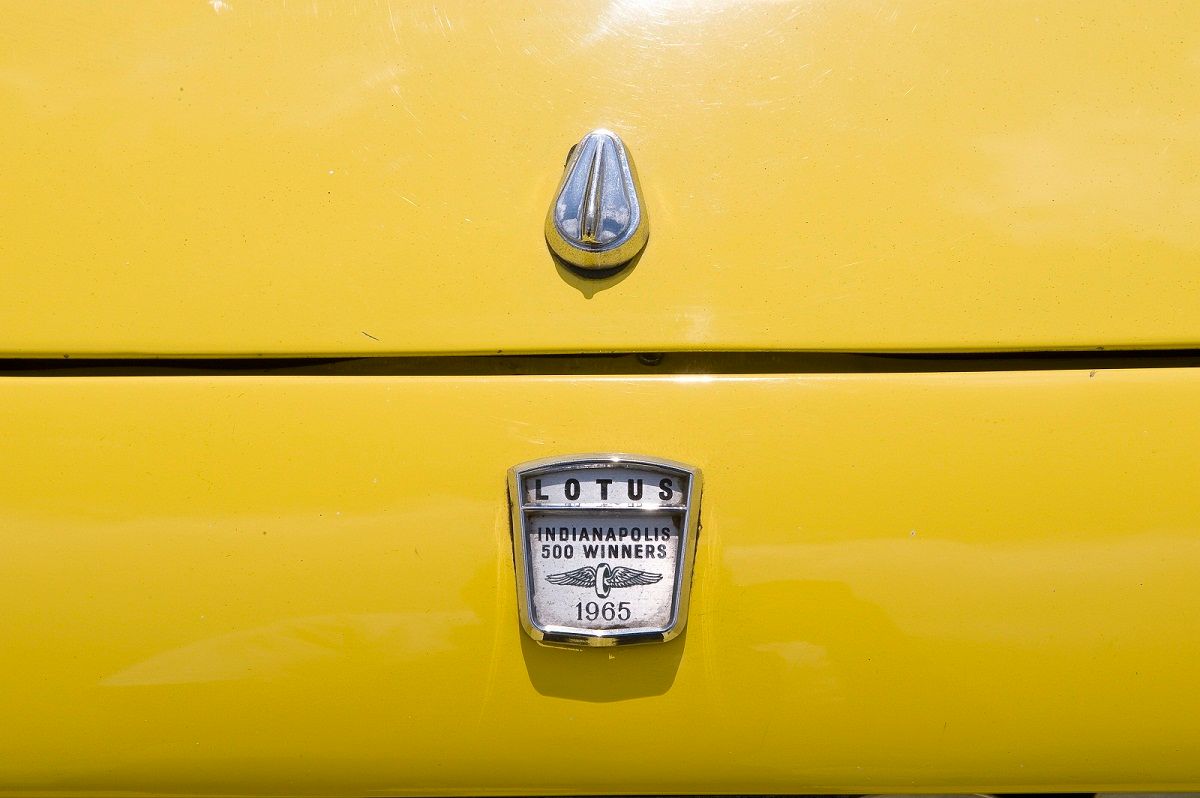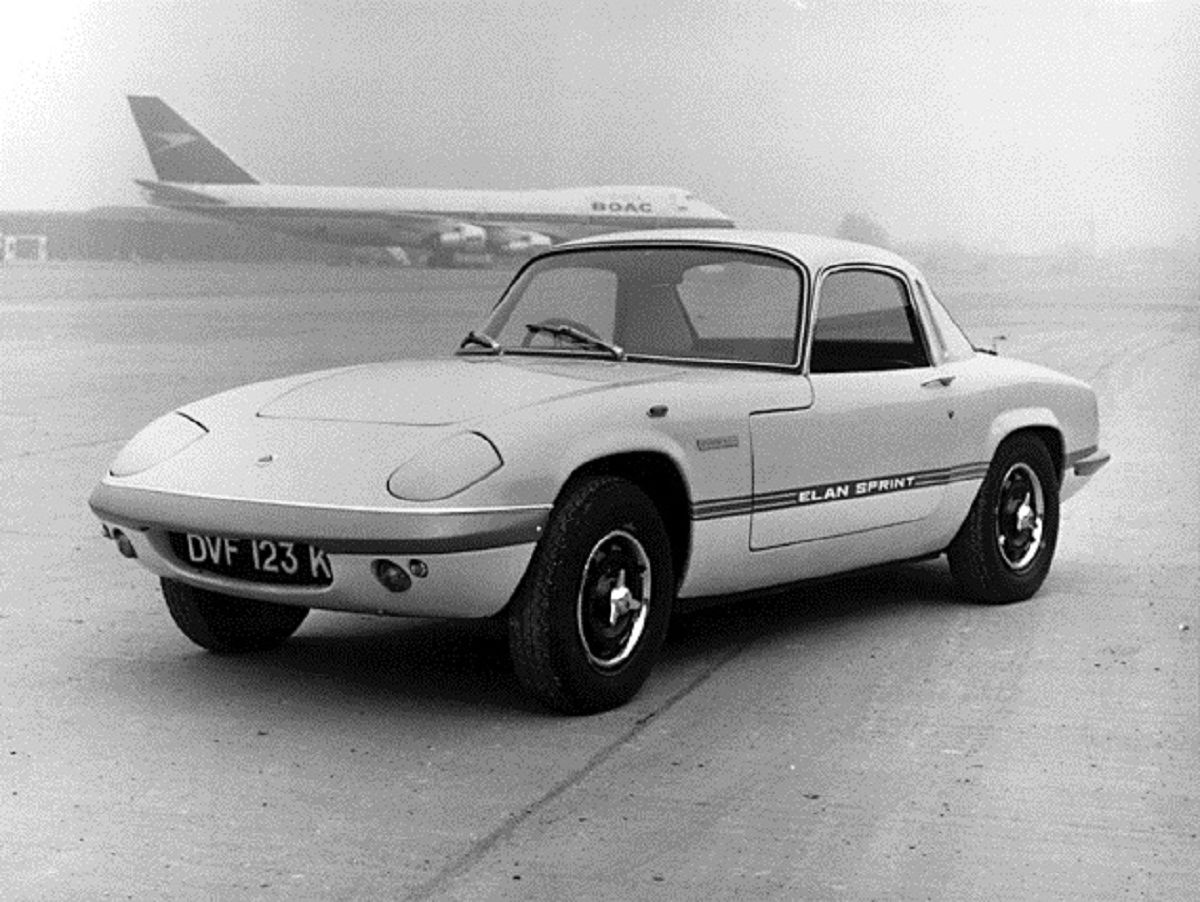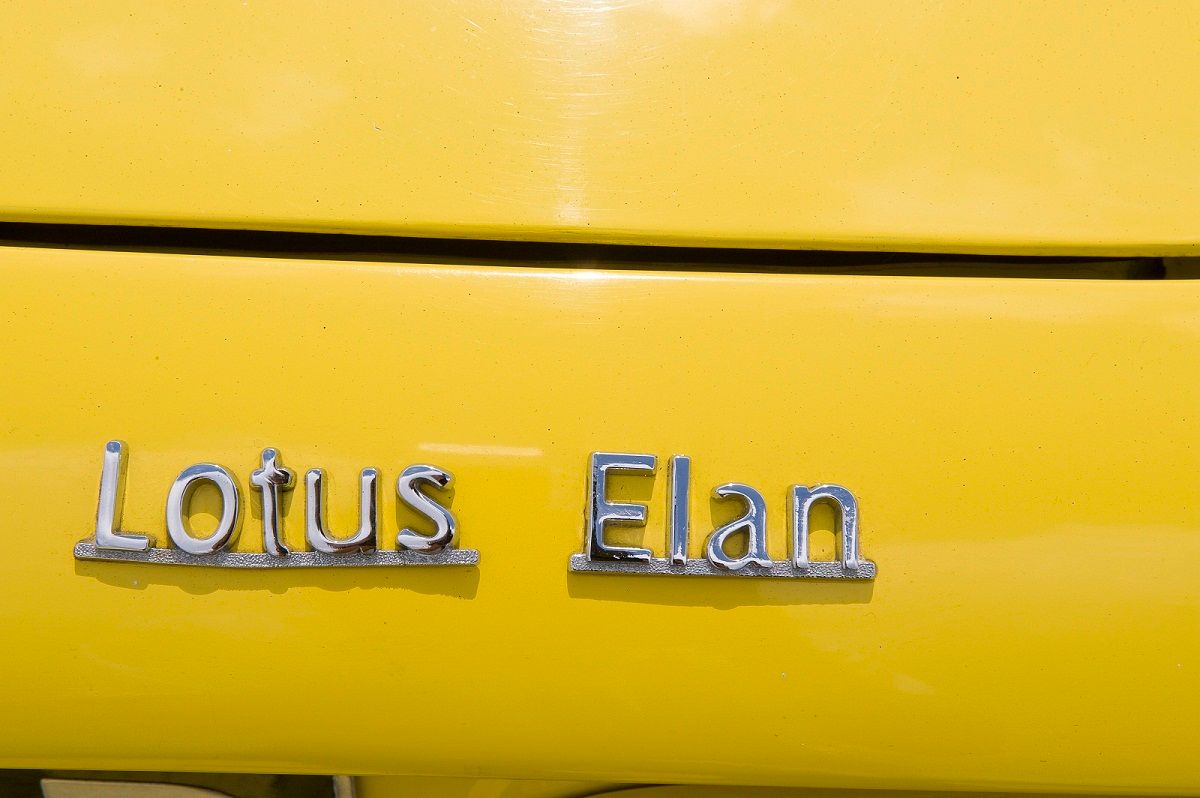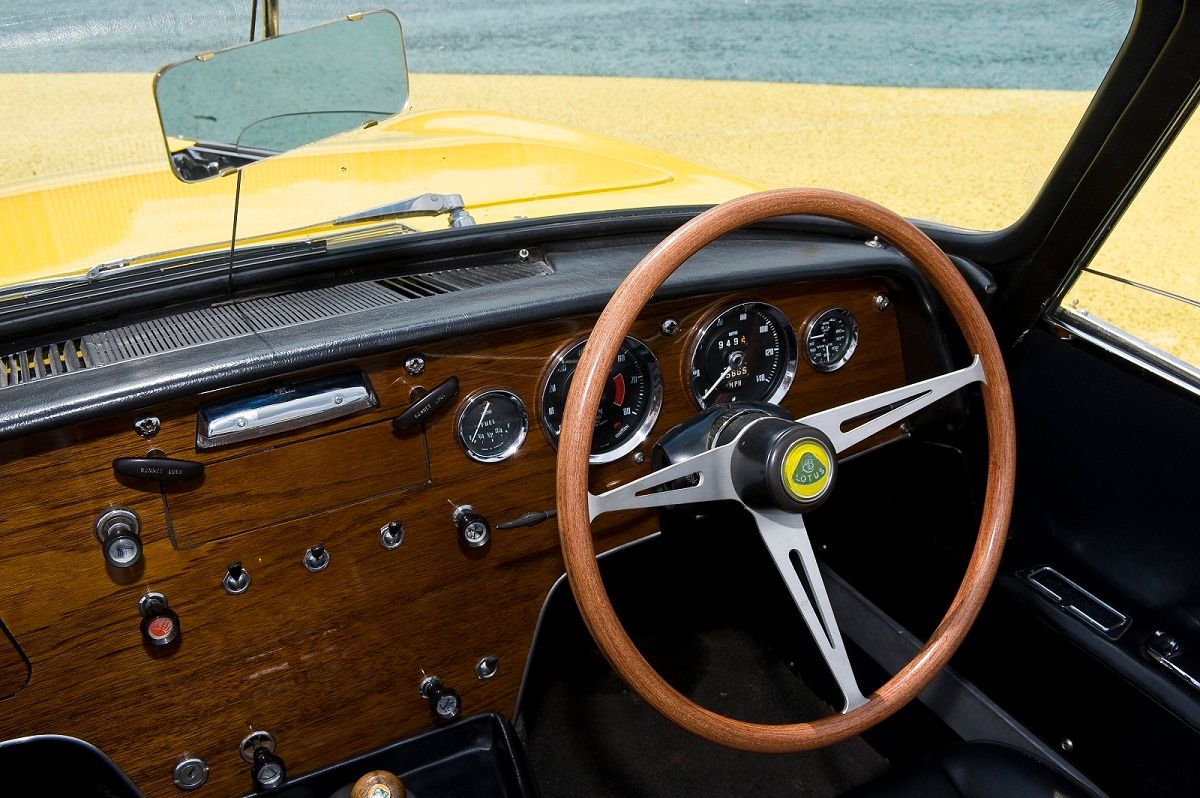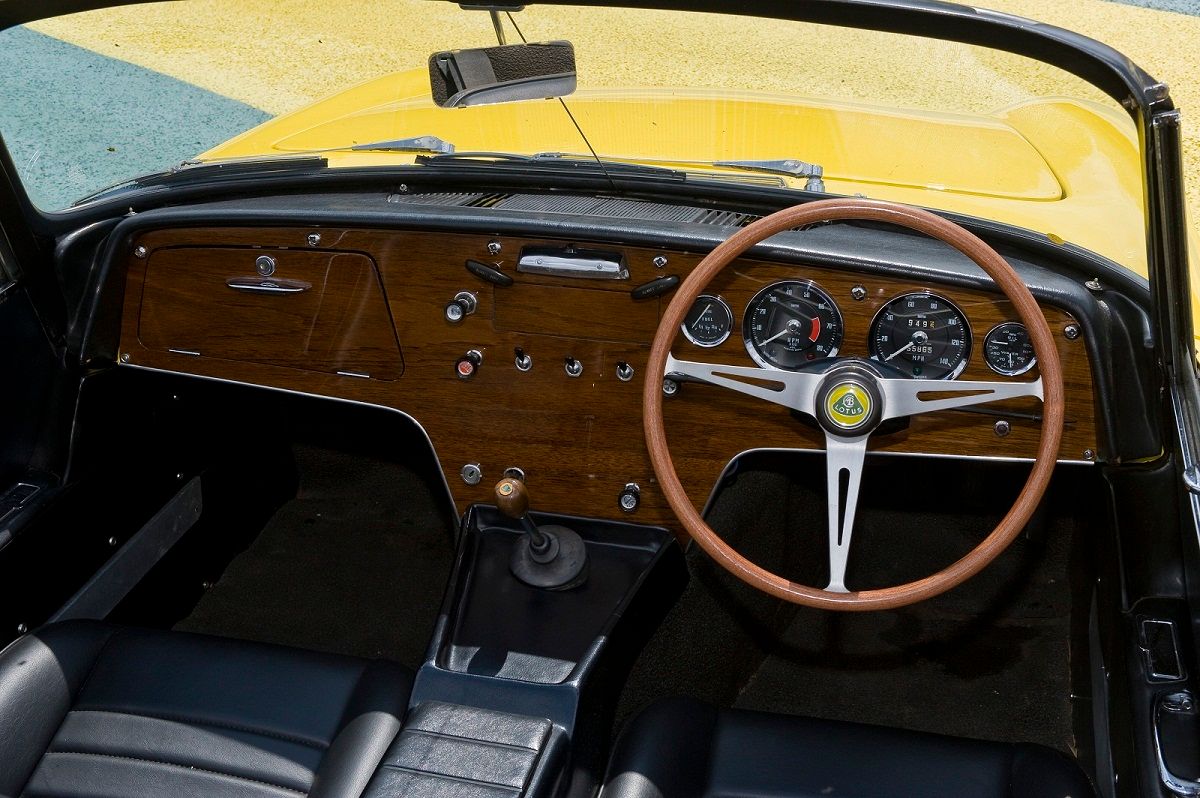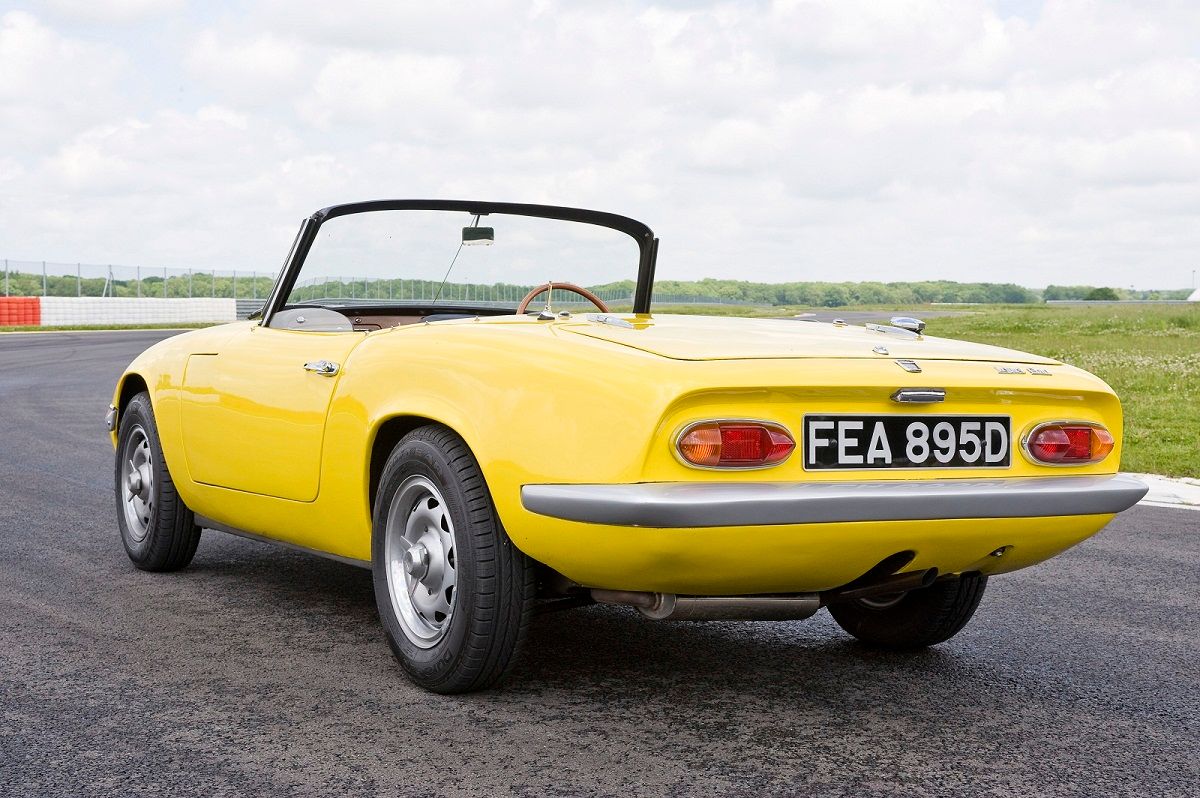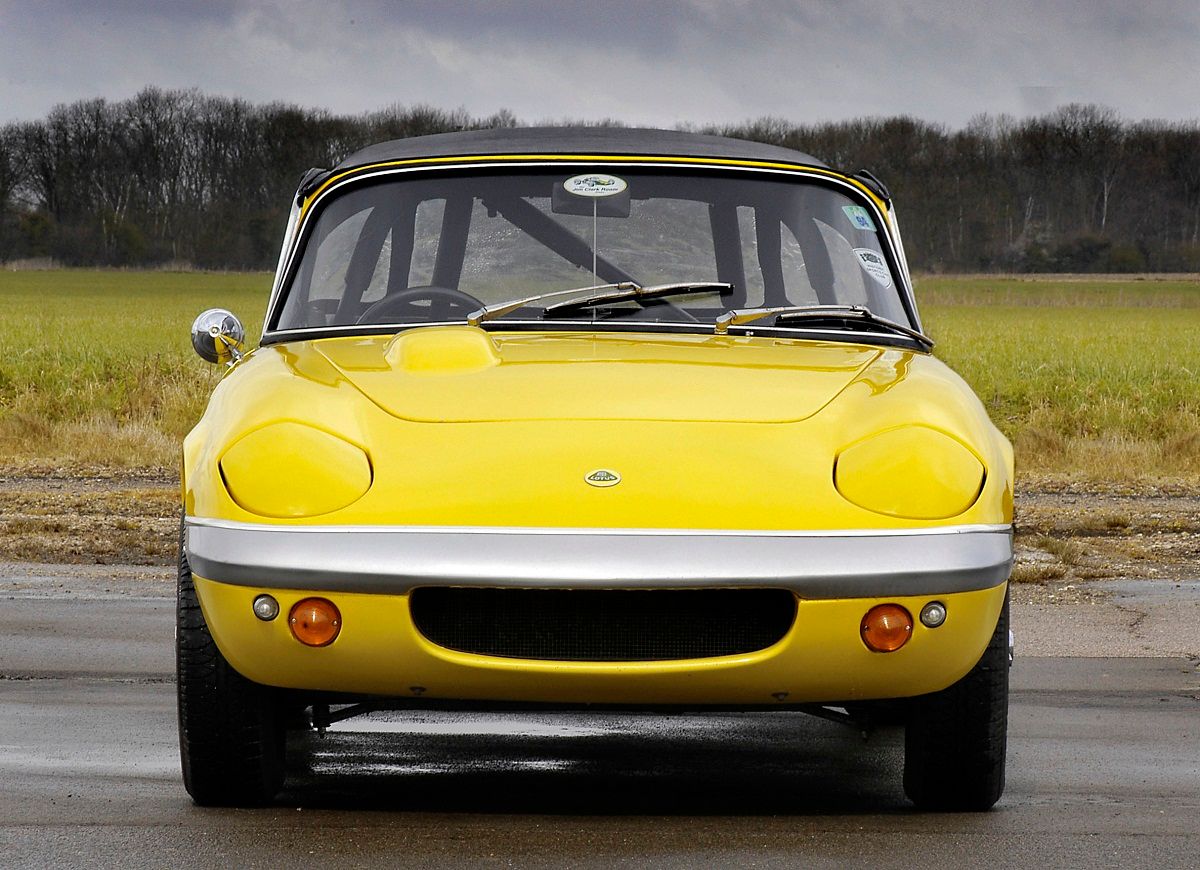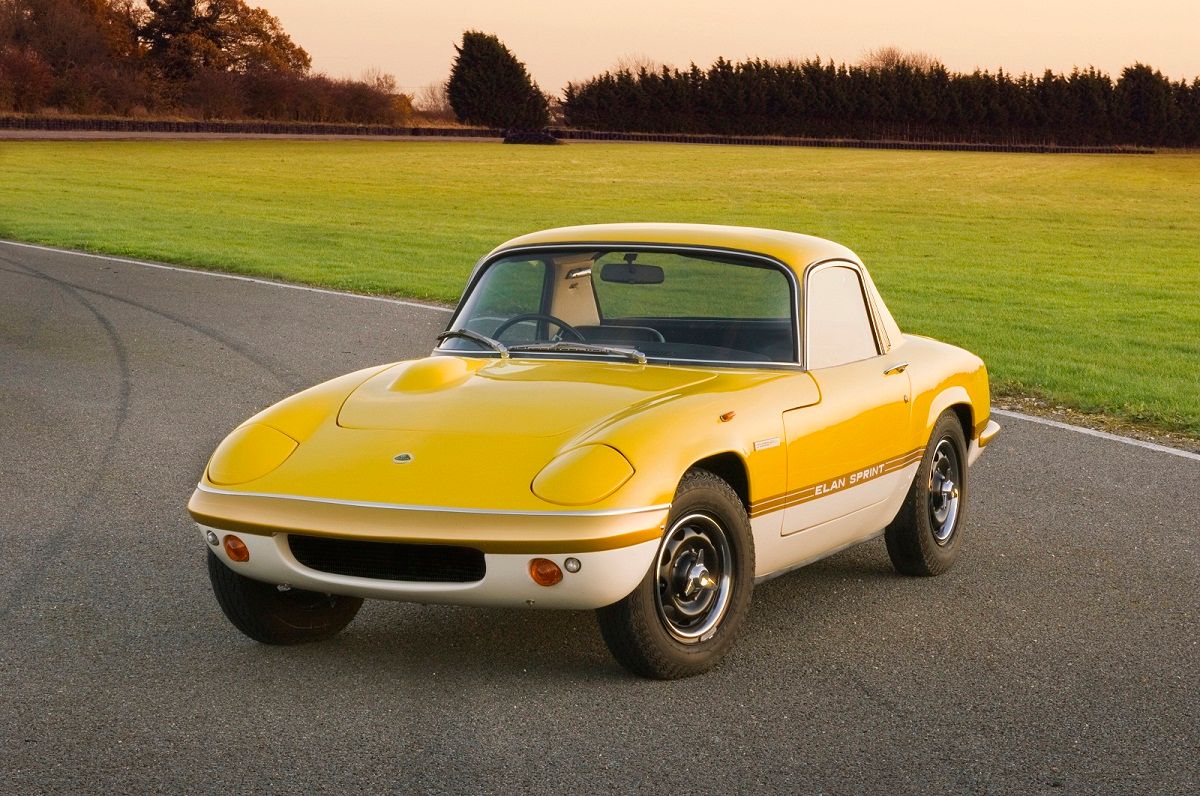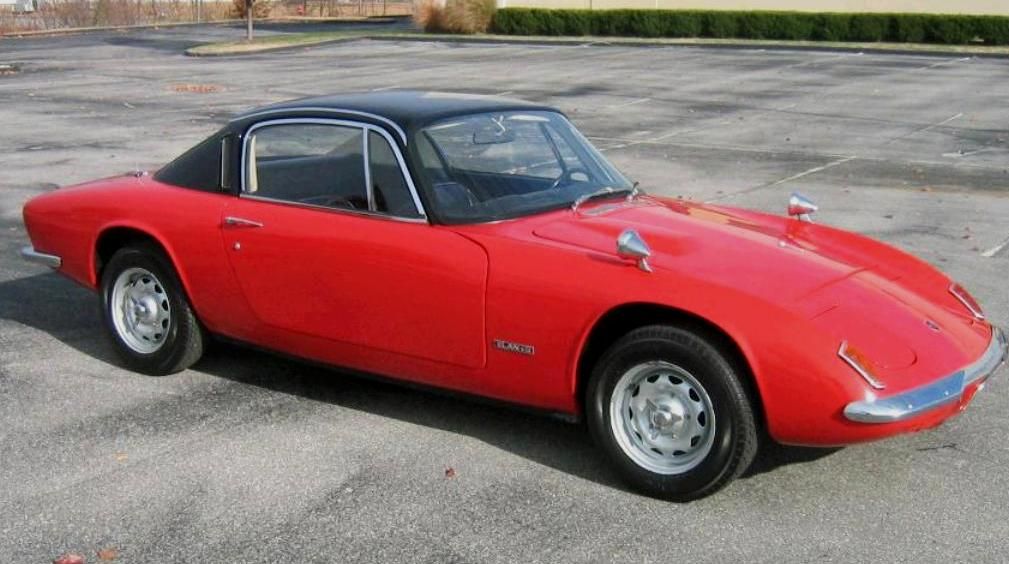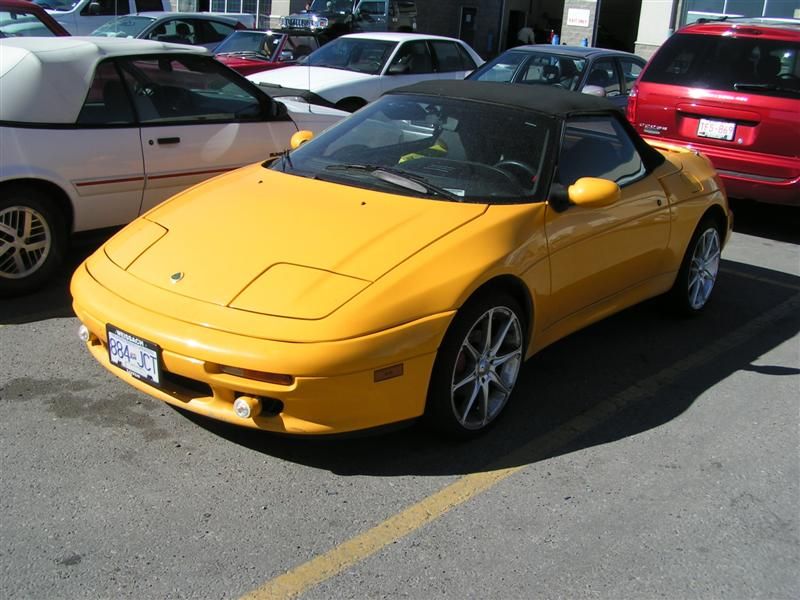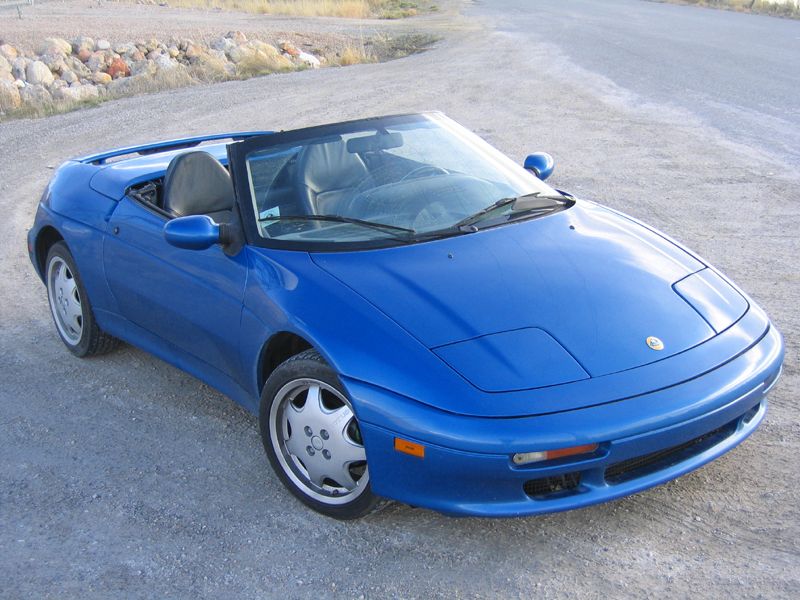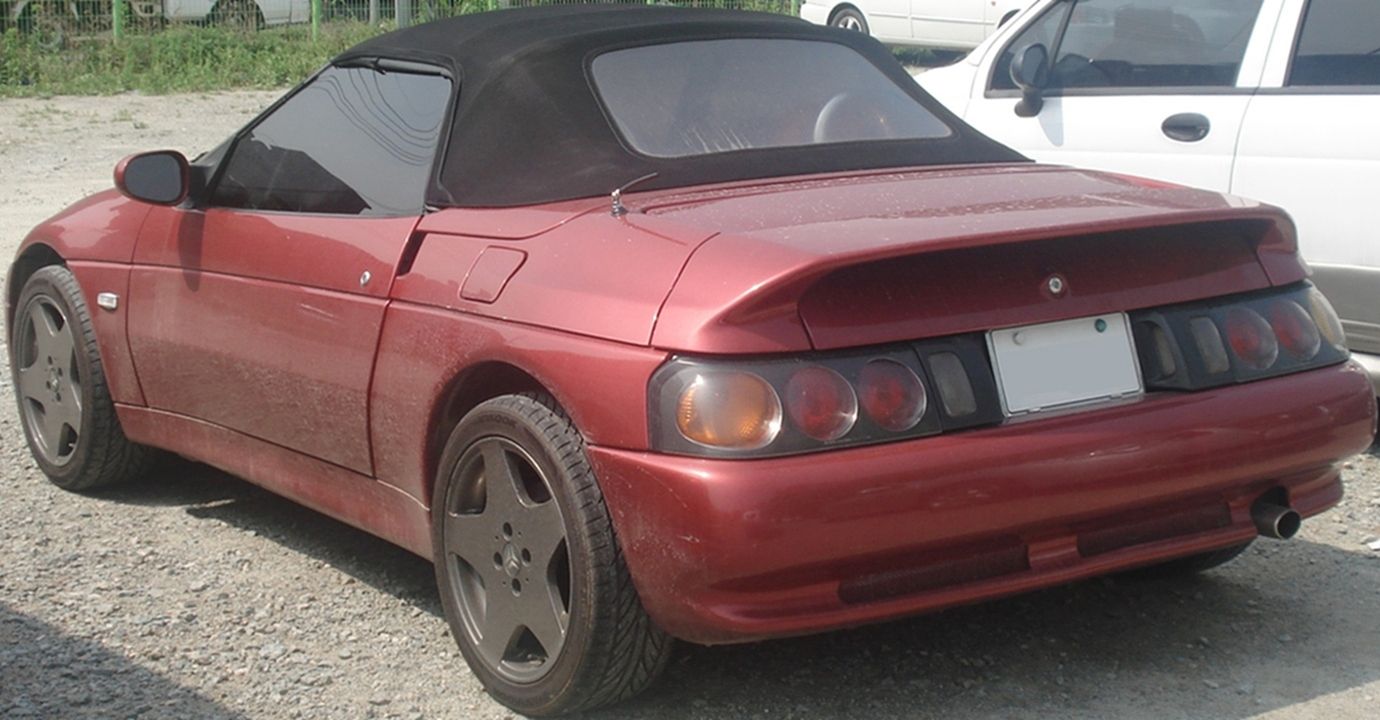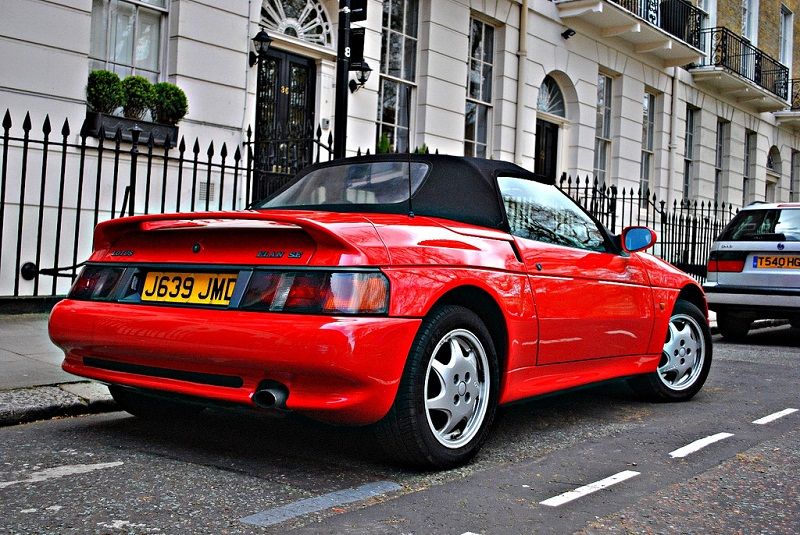The Lotus->ke49 Elan was the true mother of all sports cars. You see, a true sports car does not require extreme power or a big engine with tons of cylinders pounding away – it doesn’t hurt though. A true sports car is about precision handling, peppy acceleration, and the ability for the driver to feel like he is in control of what’s going on.
The Elan is all of that wrapped up in a sexy looking, 2-seat roadster package. Well, this old girl recently had her 50th birthday and she is looking just as stunning as she did the day she rolled off of the production line back in 1962.
The Elan was a driver’s car and spawned many other spin-offs and reproductions, like the Alfa Romeo->ke1386 124 Spider, BMW Z3/4, and most notably, the Mazda MX-5 Miata->ke1185. The original Elan had a fairly successful run, lasting 13 years before getting the axe. In 1989, Lotus chose to resurrect the Elan, with the Elan M100. While the M100 was a mechanical success, it was not nearly as popular as the original rendition and it lasted just seven years.
In 2010, Lotus introduced us to a new version of the Elan that it anticipated seeing showrooms in 2013, but that release date was later adjusted to 2017. With the recent restructuring going on at Lotus, we anticipate seeing this date getting adjusted once again.
So, how can we give the Elan a special birthday this year? Well, by giving her a full historic review, of course.
Click past the jump to read our complete historical review on the 50-year-young Lotus Elan.
1962 - 1995 Lotus Elan
- Make: Array
- Model: 1962 - 1995 Lotus Elan
- Engine/Motor: inline-4
- Horsepower: 162
- Transmission: 5-speed transmission
- [do not use] Vehicle Model: Array
Exterior
The Lotus Elan had only two generations, one lasted from 1962 through 1975 and the other lasted from 1989 through 1995.
1962 – 1975
The original Elan was designed by Ron Hickman to combine a well-tuned engine with a compact body and incredible handling. The body, however, was something that few would ever see in the 1960s. It boasted a convertible top, with an optional hardtop that was made available in 1963. The slanted nose and rounded fenders combined with the pop-up headlights to create the ultimately sexy sports car.
The side profile of the Elan is equally as stunning as its slope-nosed front end, boasting very slight curves that give it just enough character without overdoing it. The mouth-like grille just under the bumper made the Elan look like it was almost smiling as you walked toward it ready to take it for an exhilarating spin. On the back end, you have a pair of chrome-surrounded, oval-shaped taillights and a center-exit exhaust that exits via a cutout in the bottom of the Elan’s body, giving it a clean finish.
The 13- x 4.5-inch wheels on each corner are relatively small by today’s standards, but for the era and the ultra-svelte 1,290-pound fiberglass body, that was more than enough width to make the Elan into a dreamy handler.
In 1967, Lotus saw the need for two additional seats in the Elan, so it stretched the Elan’s wheelbase and added in a pair of rear seats, creating the Elan +2. Sans the longer wheelbase, the Elan +2 was an identical to the original Elan.
1989 – 1995
In 1989, Lotus saw the opportunity to release a new 2-seat roadster into the market to compete with the car that was essentially the Elan of the 1980s and 90s, the Miata – Ironic, huh. This car was dubbed the M100 Elan and shared little with the debut model.
This new version of the Elan boast a slanted nose, like the original, but it has rigid body lines that are nothing like its predecessor’s soft, yet sporty, body lines. The wheel wells on the newer M100 Elan are exaggerated to make room for the much wider rims, which gave it a sort of “baby Lamborghini” look that didn’t go over too well with Lotus enthusiasts.
The M100 Elan was also significantly fatter than the original version, weighing in at anywhere from 2,198 lbs to 2,447 lbs, depending on the options that the car came with.
The M100 Elan never really took off, as it failed to sell well and was axed shortly after GM sold Lotus off to Bugatti. A year later, however, Bugatti resurrected the M100 Elan and dubbed it the “Series 2,” but only 800 were produced and the name was again dropped.
Interior
1962 – 1975
To say the interior of the original Elan was modern would be an understatement. The Elan boasted full carpeting and a full wood-grain dashboard fascia, giving it a luxurious look and feel not seen in most sports cars of the era. The gauges and knobs are very few, which was typical of the era. Very untypical of the times was the fact that this 2-seat roadster included power windows, which was just becoming optional on most 1960s cars. It also featured the obligatory massive steering wheel to compensate for the lack of power steering.
Overall, the debut Elan’s interior is very basic with a touch of futuristic sprinkled in to set it off. The wood-grain fascia on the dashboard is far and away to No. 1 touch to the Elan’s interior.
1989 – 1995
The interior of the M100 Elan is a completely different animal than the original Elan. The M100 Elan boasts your typical late-80s to early-90s sea-of-plastic interior. The dashboard was one massive hunk of grey plastic, as was the dashboard’s fascia. With the M100 Elan, you get a few extra gauges, especially if it is a turbo model.
In all honesty, the M100 Elan really stinks of 1990s GM cheap interior, as there is nothing to write home about with it.
Engine and Drivetrain
1962 – 1975
Staying true to the sports car term, Lotus fitted the Elan with a compact 4-banger engine. This 1,558 cc (1.6-liter) 4-cylinder engine is not your typical 4-pot from the `60s. It boasts a dual-overhead-camshaft configuration, which was very uncommon for the era, and two Webber carburetors. This engine was good for 105 horsepower at 5,500 rpm and 108 pound-feet of torque at 4,000 rpm, which may not seem like much to us now, but then it was astronomical for a 4-pot to exceed 100 horsepower. In every model year, this compact 4-cylinder engine linked to a 4-speed manual transmission.
Throughout the years, the 1.6-liter 4-cylinder engine became more powerful, as it jumped to 115 horsepower in 1966, 118 horsepower in the 1967 Elan +2, and capping off at 126 ponies in the 1971 Elan Sprint. The Elan sprint was by far the quickest of the early Elans, hitting 60 mph in just 6.6 seconds, in 1973, which is far faster than most “muscle cars” of the emissions era.
1989 – 1995
The M100 Elan’s engine is an odd one, as it came from a rather unlikely source at the time, Isuzu. This 1,588 cc (1.6-liter) 4-cylinder is a 16-valve, DOHC configuration. Though this engine was sourced from the lowly Isuzu Gemini/I-Mark, it was quite the performer, once Lotus got its hands on it. Without the aid of a turbocharger, this engine pumped out 130 horsepower. When fitted with a turbo, this petite engine could crank out 162 ponies.
Some of the modifications that Lotus performed on the engines include: freer flowing exhaust, shorter and freer flowing intake plumbing, and ECU modifications.
The most disappointing thing about the M100 Elan is the fact that GM made it a front-wheel-drive car. Despite the front-front configuration, this 2-seat roadster was still a good performer, as its turbocharged model, which mated to a 5-speed transmission, blasted to 60 mph in just 6.5 seconds, which is far faster than most cars of the time.
Suspension and Braking
1962 – 1975
The suspension and braking systems are where sports cars are made famous or infamous, and the original Elan was well-regarded in this area. This compact machine boasted front and rear independent suspension. Another thing of beauty was the fact that this was one of the few cars at the time to feature 4-wheel disc brakes. The front discs measured in at 241 mm (9.48 inches) and the rears measured in at 254 mm (10 inches). Why exactly the rears are larger than the front, we really don’t know, but to have 10-inch rotors on the rear of a 1960’s car is a little touch of awesomeness.
1989 – 1995
The M100 Elan’s suspension was also a 4-wheel independent variety, but its front-front format led some to believe there would be massive under-steer to deal with. Somehow, Lotus managed to overcome one of the biggest shortcomings in front-drive cars and make the Elan an extremely predictable handler.
The stiff chassis and short wheelbase of the M100 Elan kept it firmly planted in corners and minimized body roll. Also keeping it glued was a set of performance Z-rated tires.
Continuation
When Lotus axed the Elan name, following the 1995 model year, the most unlikely of companies snagged up the name and design rights, Kia. Yup, from 1996 through 1999, the South Korean car manufacturer built and sold the Kia Elan. Now, before you go scouring the used car lots for one of these, Kia only released this model it its home market, so you can pretty much forget about getting one.
Kia scrapped the Lotus-tuned Isuzu-built 1.6-liter engine in favor of its own 1.8-liter 4-cylinder engine that was tuned to pump out 151 horsepower.
The only outward difference between the Kia Elan and the Lotus Elan are the taillights.
Conclusion
With this review, we wish the Elan a happy 50th birthday. We certainly hope that Lotus stays true to its word and produces the Elan for the 2017 model year, but we are not holding our breath. We can still enjoy the classic Elans, in particular the first generation model with is the mother/grandmother of all the modern day roadsters.

